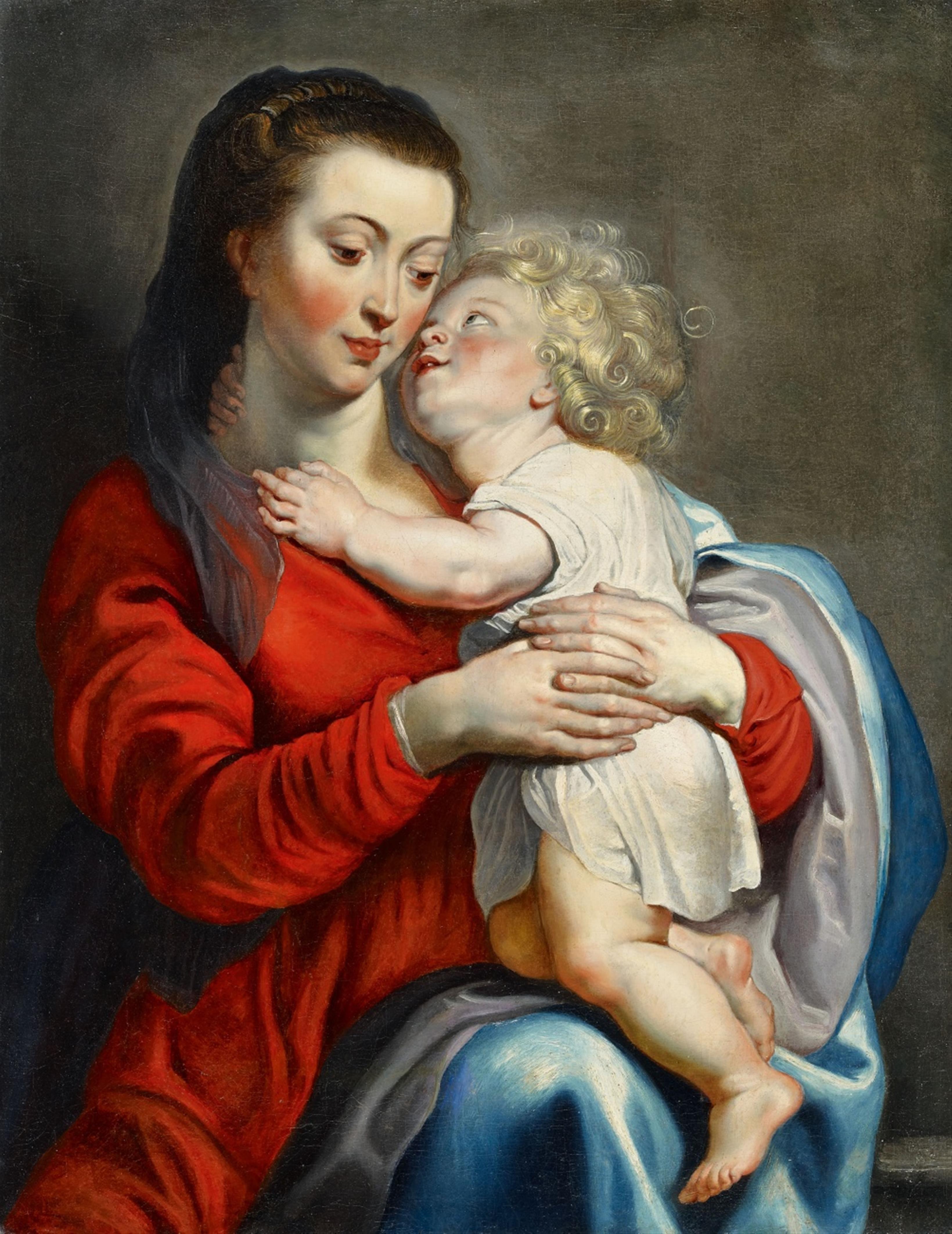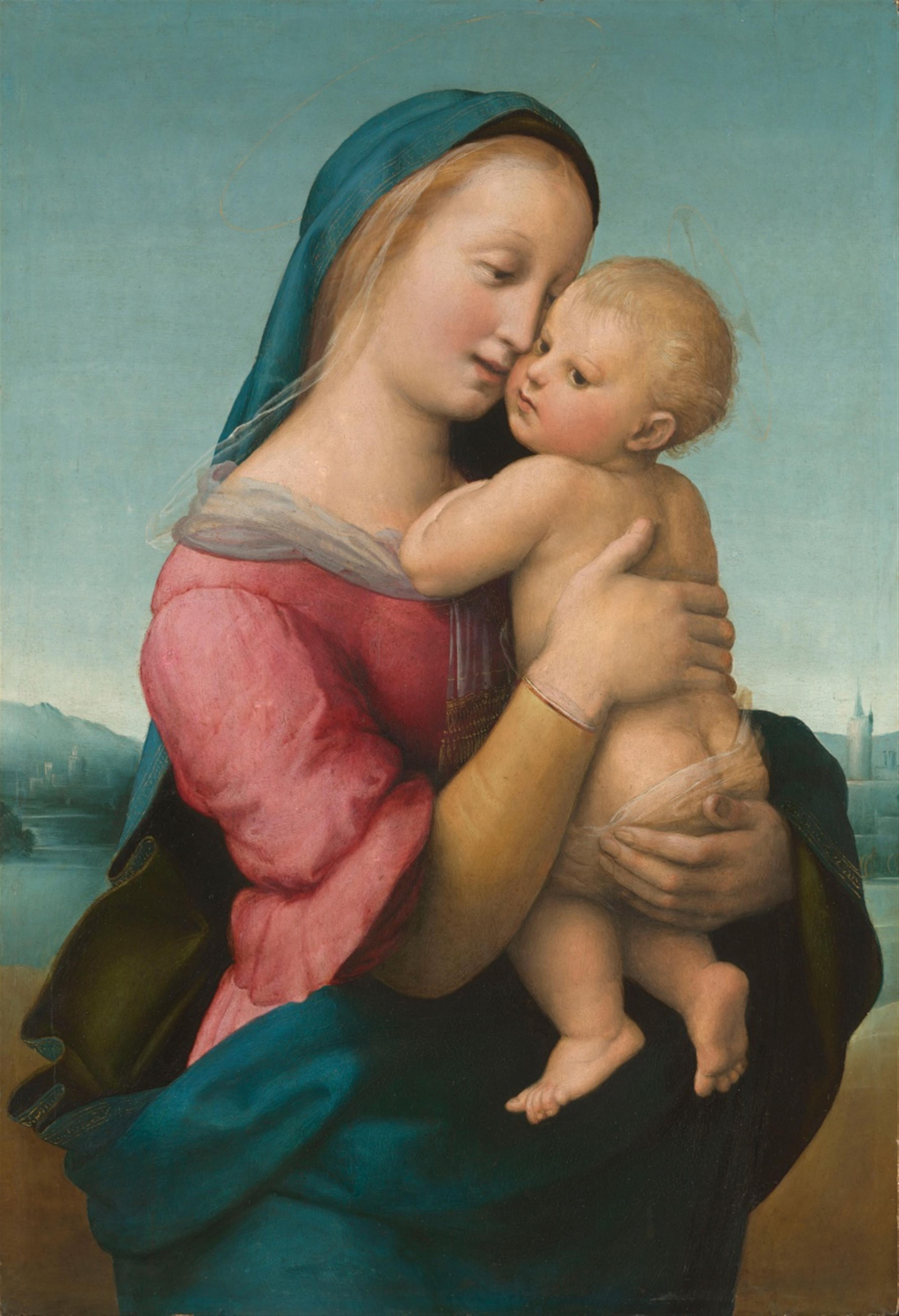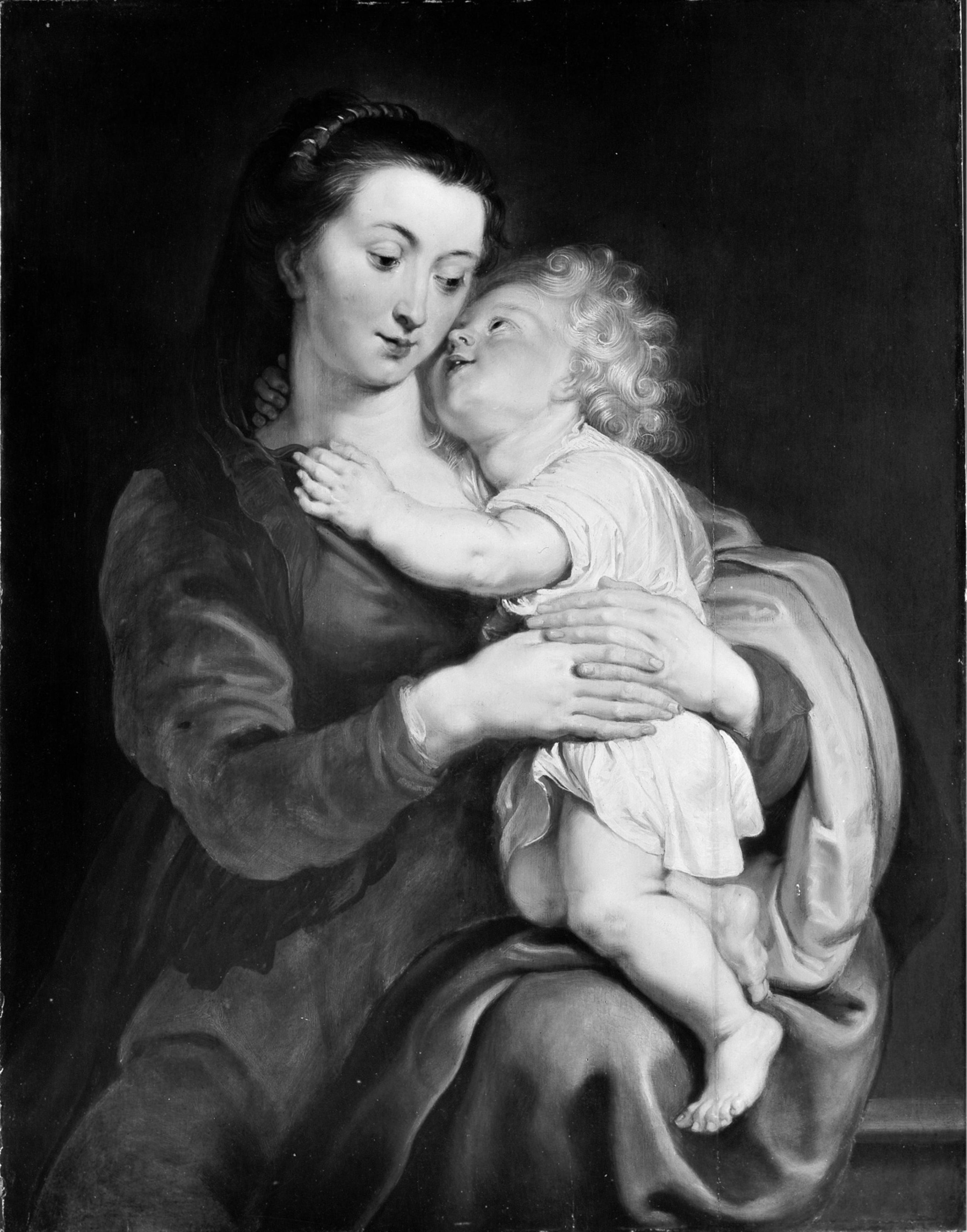Peter Paul Rubens, studio of
The Virgin and Child
Oil on canvas. 92 x 72 cm.
This depiction of Christ and the Virgin, long in German aristocratic ownership, represents a fine product of Ruben's workshop in which we can presume the participation of the master himself. The work can be dated to around 1615. It shows the Virgin sitting upright on a bench holding Her Son in Her arms. She appears slightly lost in thought, but the blonde Child embraces His Mother with His left arm and looks up lovingly towards Her. The figures are monumental in design and fill the entirety of the image. The vivid white, red and blue of the drapery and the pale, fluidly applied pigment of the flesh combine to form an intense tonal composition. These characteristics are typical of Rubens' works during the first decade following his return from Italy in 1608.
Rubens sought the inspiration for this motif of the Virgin and Child embracing in the Italian paintings which he studied during his sojourn. Raphael's “Madonna Tempi” (illus. 1), painted during the high Renaissance, formed the prototype for numerous similar depictions of the standing Madonna holding the affectionate Christ Child close to Her in both hands. Rubens has varied this motif by seating the Virgin on a bench, and letting the Child kneel on her left leg to look up to her. He has translated the motif of Raphael's “Madonna Tempi” into a monumental Baroque visual language without relinquishing the intimacy of the depiction.
According to Michael Jaffé (Jaffé 1985, op. cit. p. 205), Rubens painted the original version of this composition for the Stadtholders of the Southern Netherlands Archduke Albrecht and Archduchess Isabella. The original has since been lost, but the composition has survived in an engraving by Jonas Suyderhoef as well as numerous workshop replicas and later copies, testifying to the popularity and importance of the work. Jaffé lists replicas in two Belgian private collections (Collection of Alain Waltregny Liège; Christiani Collection, Antwerp), the Hermitage in St. Petersburg and the Metropolitan Museum of Art in New York. The New York version is closest to the present work (cf. illus. 2). Justus Müller-Hofstede (cf. his expertise) refers to pentimenti in the figure of Christ as an indication of Rubens' participation in the work, as the busy artist is known to have made amendments to many of his commissions.
Provenance
PROVENIENZ FOLGT
Literature
LITERATUR FOLGT






